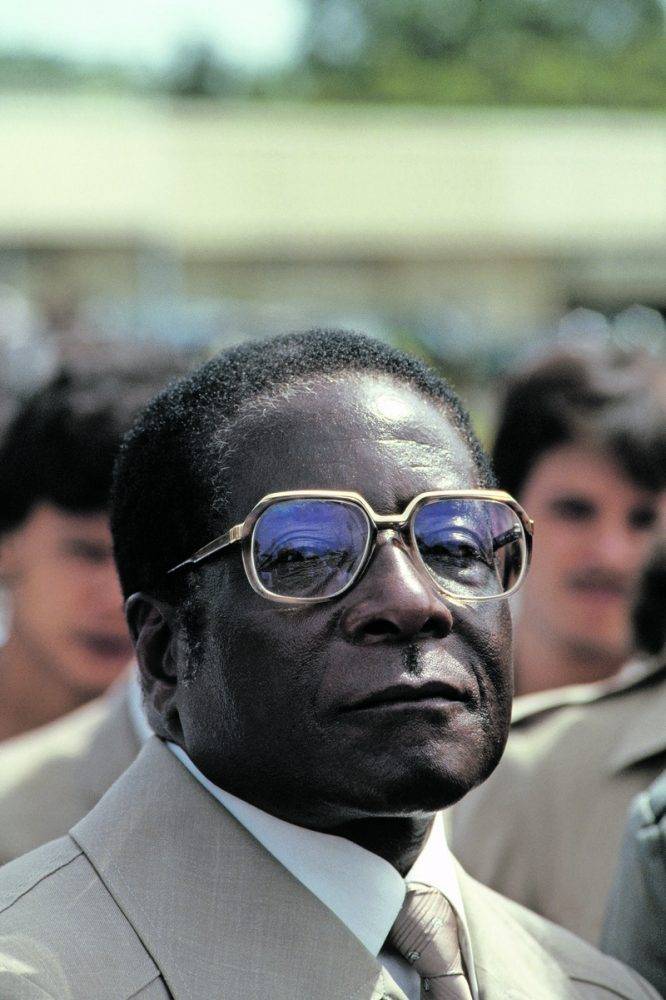‘I was once a great democratic leader of a prosperous African country … never mind what happened after 1997.”
Imagine former president Robert Mugabe rising from the grave and in his languid colonial British accent making such a remark. Only historians, political scientists and those old enough will make sense of him — able to recall the glories of a pre-Economic Structural Adjustment Policy(ESAP) Zimbabwe.
The rest, who bow down to popular and populist history, only remember post-1997 Zimbabwe — the only Zimbabwe that matters, that still stands.
It is not on account of the economic ravages brought on by ESAP measures that this is the only Zimbabwe remembered. It is because of the most hardened securitised responses to protests against economic hardships.
Post-1997 Zimbabwe has been reduced to the commanding figure of Big Bad Wolf Mugabe, who huffed and puffed it away. So unnerved were the victims of political persecution that pre-1997 Zimbabwe has been forever consigned to a footnote of history, written in size 6 font.
We can say the same for Seth, the Egyptian mythological god of deserts, wars, violence, thunder, storms, disorder and foreigners. No one remembers that he was once a good god. He famously stopped Apophis, the serpent, from disrupting the sun god, Ra, from its daily orbit of the earth.
In When a State Turns on its Citizens: 60 Years of Institutionalised Violence in Zimbabwe, Lloyd Sachikonye chronicles state-sponsored violence in post-2000 Zimbabwe. It is its evolution that unsettles him, how it morphed into institutionalised political culture, completely severed from its economic root causes.
It takes an incredibly short time for a palpably economic challenge to shapeshift into a political crisis of state legitimacy.
The political crisis then becomes the only thing that matters. All it takes is a series of flagrant human rights violations, meted out by the state against a people protesting against inflation, high food prices, unavailability of water, high electricity tariffs and closed-down clinics.
This is not a far-fetched likelihood for South Africa. This pattern also threatens to destabilise the legitimacy of the post-apartheid democratic South African state. It is going to be such responses to economic hardships, brought about sharply by home-grown austerity measures, in addition to the widening and seemingly perennial inequalities.
The shooting and killing of Andries Tatane on 13 April 2011 in Ficksburg, Free State, by the SAPS on live television during service delivery protests marked the first securitised response to inequalities conflicts in post-apartheid South Africa. The period 1998-2005 witnessed a spate of protests, particularly driven by threats of privatisation and public-private partnerships of public service delivery. Post-2005, these gained a particularly violent hue in Harrismith; Kennedy Road in Durban; Diepsloot, Balfour, Thokoza an Khutsong in Gauteng; and Macassar Village, Landsdowne Road and Mandela Park in Cape Town.
Stating the obvious, the spectacle of the South African state meting out violence on unarmed people over economic hardships protests is not new. However, a novelty that is highly likely to come to pass, a cataclysmic newness, is when such state violence gains institutionalisation.
It will contend with protesters pinned down by the height of austerity measures and the summit of inequalities. That is when economics becomes political. And then all the economic narratives will be on their way to the waste bin, consigned to the footnote of history, size 6 font.
Austerity measures are fiscal policies implemented by the state, aimed at resolving debt and economic growth during periods of economic stagnation.
Their common strategies are spending cuts, regressive tax measures, deregulating the labour market, and emphasising the role of the private sector as drivers of economic growth. In sum, the state attempts to shrink its social welfare role.
In this state, the economic distributive role of the state in favour of the poor majority citizens of the state becomes more circumscribed. As Finance Minister Enoch Godongwana stated in his 2024 budget speech, it becomes difficult to distribute the “economic pie”, particularly one that is not growing, in the face of worsening inequalities.
In Inequality Studies from the Global South, the inequality identified that resonates the most with South Africa is “existential inequality”. Its emphasis is on the discrimination of a particular, powerless group, and its basis is laid on skewed power relations.
David Francis, Imraan Valodia and Edward Webster argued: “It is not just about differences between individuals, groups, regions or countries. Differences are given or chosen, while inequalities are socially constructed. Inequality is about the condition that allows certain groups to dominate over others.”
How then should the South African state avoid the Zim way? How should the South African state contend with conflicts in the face of inequalities and the effects of austerity measures?
The solution lies in recognising that conflicts are likely to emanate from relationships with local or municipal governments over services delivery — and to utilise conflict transformation measures there.
Conflict transformation regards conflicts as motors of change that keep social structures dynamically responsive to social needs through nurturing and strengthening institutional and social relationships. At its heart is relationships.
These are formed between local government and community structures, creating and sustaining dialogue and engagement platforms that address immediate social needs.
Also, and more importantly, these platforms should, on an ongoing basis, engage in long-term conflict challenges. In that way, securitised responses to inequality conflict are edged out of the governance equation. And so, South Africa avoids the possibility of the securocratic elite embedding itself in the state for the long haul — as in the Egypt, Sudan and Zim ways.
Buntu Siwisa is a senior researcher at the Southern Centre for Inequality Studies (SCIS), Wits University.





















Discussion about this post